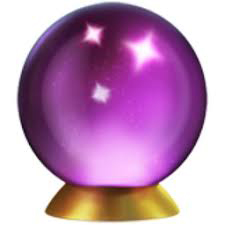Anne Vetik takes a look at fashion cores that may not dominate consumerist realm at the moment — hello omnipresent gropcore — but are worth getting familiar with.
Witchin’ Around
Who wouldn’t want to cast spells and see the future? Probably only the truly boring folks. If you’re not a real witch, at least you can dress like one. The original witchcore icon is likely Stevie Nicks—who still rocks the look today. The trend itself can be traced back to the 1970s, with its enchantment with Wicca, DIY jewelry, and alternative medicine.
How to embrace witchcore? Layers, layers, and more layers. Shawls, cloaks, cardigans, and scarves add depth and mystery to the look. Go for lighter or darker shades and use heavier fabrics like velvet or floaty silks. The magic lies in the details: crescent moons, stars, pentagrams, runes, and herbs often appear as prints or embroidery. Want to spice it up? Channel artist Boris Vallejo’s work and embrace your inner dominatrix-witch with a bold, dramatic flair.
How does witchcore differ from goblincore or dark academia? It leans heavily into postmodern spiritual practices. If someone looks like a witch, chances are they dabble in tarot cards or birth charts. In that sense, witchcore feels more “real” than other cores, which often focus purely on aesthetics.


Coastal Grandmother
Life is chill when you’re a rich boomer with a lovely house by the sea, whether it’s in Viimsi or Cape Cod. The Coastal Grandmother aesthetic exudes a relaxed, elegant vibe—always hinting at something timelessly nautical, paired with tasteful gold jewelry and subtle sailing motifs. Best embraced in summer (unless you live in warmer climates), it’s always a relevant choice for those on vacation.
How to dress the part? Oversized silhouettes, silk and linen fabrics, and, if needed, a cable-knit sweater. Top it all off with a cool Panama or straw hat. Preferred footwear includes flip-flops or comfy boat shoes, which have also dominated street style this autumn. However, don’t try coastal core if you’re pale as a ghost! The best representations of this style are Gwyneth Paltrow in the Hamptons or Marko Matvere anytime.
Tractorcore x Cryptidcore
Have you noticed the oddly specific ASMR content trending on Instagram? Couples (or singles) showing off their farms, tractors, dogs, sheep, crops, and gardens? Enter tractorcore, which stands with one foot in British pastoral traditions and the other in classical cowboy aesthetics. Think Barbour jackets, corduroys, high boots, overalls, and Carhartt—worn for actual purpose, not just for show—and, of course, heavy machinery.
But wait—isn’t it a bit boring? The real fun begins when you mix tractorcore with cryptidcore. Why not spice up your country life with a touch of creature-hunting? Basics like overalls and boots can stay, but incorporate dark flannels, forest-ready hiking fits, and muted tones. Essential accessories include binoculars (to spot Bigfoot or nightcrawlers), flashlights (to avoid getting lost), and sketchy maps. Don’t forget to spend sleepless nights scrolling Reddit for real-life cryptid encounters to sound professional. While tractorcore is wholesome, tractorcore x cryptidcore is wholesome and mysterious.


Corecore
Corecore is one of the most abstract and meta aesthetics currently trending on social media. It’s rooted in the internet’s tendency to ironically layer and combine absolutely anything, all while questioning the very concept of trends. Essentially, it’s the aesthetic of aesthetics, often critiquing modern consumerism, nostalgia, and the constant pursuit of curated identities.
How to do it? Eclectic, layered looks that mash up elements from multiple aesthetics, often nonsensically. Think of pairing random props—a shopping bag and a crown—with pajamas and drag-show-level face paint.
Corecore serves as a reflection of internet culture, poking fun at the proliferation of hyper-specific “cores” while actively participating in it. It’s self-aware, ironic, and borderline sarcastic. It examines the why behind people’s attachment to aesthetics, exploring how they define identity through curated visuals.
As certain nihilism lurks beneath this "core of cores," reflecting frustration with the oversaturation of trends and the search for meaning online. Compared to other aesthetics, which often embrace overconsumption or “look-of-the-day” logic, corecore feels like a critique of consumerism. It highlights how internet aesthetics are frequently tied to marketing and the endless consumption of specific products.